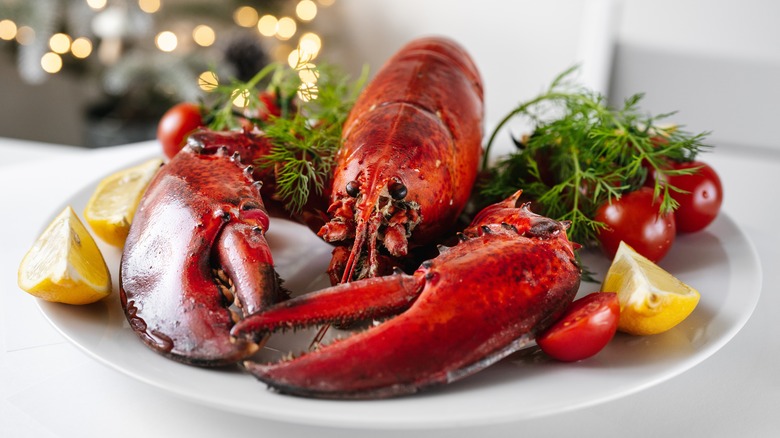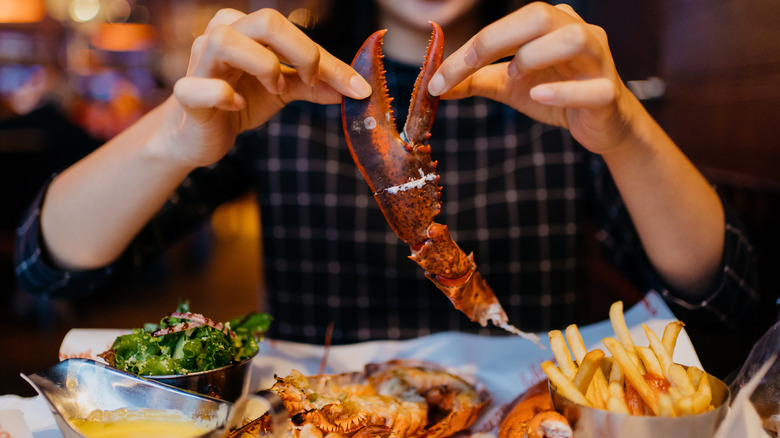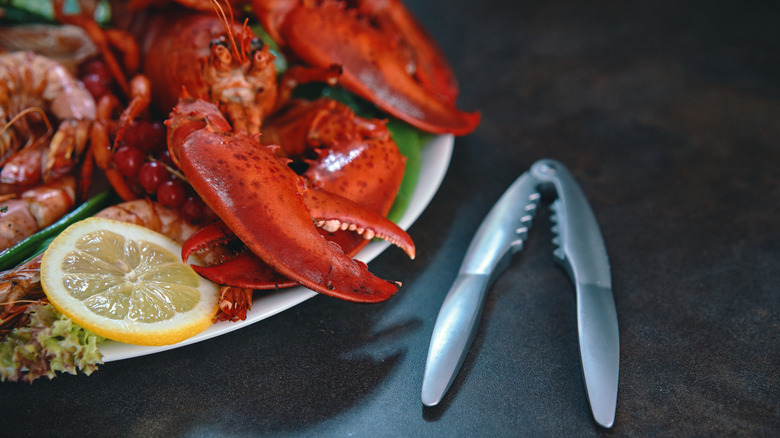How To Crack Lobster Claws For The Maximum Amount Of Meat
Ordering a fresh lobster roll, whether it's warm with butter or served cold with mayonnaise, feels synonymous with summer. Of course, if you're up for the challenge, you can forego the roll and choose to dismantle your own whole lobster — but it definitely takes a bit of skill.
Lobster meat lies in the claws and tail, and with the price of lobster these days, you don't want to miss out on any of it. It turns out there are two big secrets to a perfectly-cracked lobster claw: Use a small amount of pressure, and make sure you have the proper claw-cracking tools, such as a lobster hammer or cracker and small fork.
While anyone can learn how to crack a lobster, it's hard to know where to start. And because lobsters have hard shells that are sharp in some areas, you have to be careful not to hurt yourself (or send a piece of the shell flying at others) in the process.
How to properly crack lobster claws
To keep the lobster meat as intact as possible, and to get the most meat out of your claw, you need the right technique and tools. First and foremost, break the claw at its joint to separate it into two pieces. Then, to crack the pieces, start with a small amount of pressure, increasing pressure as necessary to get the claw to crack. Using too much pressure to crack the claw could result in the shell breaking into fragments, which shreds the meat. You want to keep the claw meat as intact as possible because it's easier to eat and also ensures that you're not getting any shell fragments in your meal.
You'll need the right tools to crack the lobster, too. Since lobster shells are quite hard, use a lobster hammer or cracker to do the dirty work for you. And when it comes to removing the claw meat, any small utensil will do. An oyster fork works well because it's small enough to get inside the shell and can pick up meat better than a small knife or spoon could.
The difference between lobster claw meat and tail meat
You'll want to get every last bit of sweet lobster meat to make the most of your hard work. While both the claws and tail offer meat, there are a couple of main differences in the meat's structure. Lobster claws are softer and more tender than tail meat. That's because lobsters move their tails aggressively while alive, which results in a firmer tail. While some people prefer the claws for that tender feel, the claw meat does have a slightly rubbery texture compared to the tail.
Claw meat is most frequently used in lobster rolls because it's tender and easy to chew. Tail meat, on the other hand, is often used as an entrée because there is substantially more meat in a tail than in a claw. And let's be honest — a lobster tail looks so elegant on a plate. Ultimately, which part you prefer all comes down to personal taste. And if you don't mind getting your fingers a bit dirty, you can certainly order the whole lobster.


